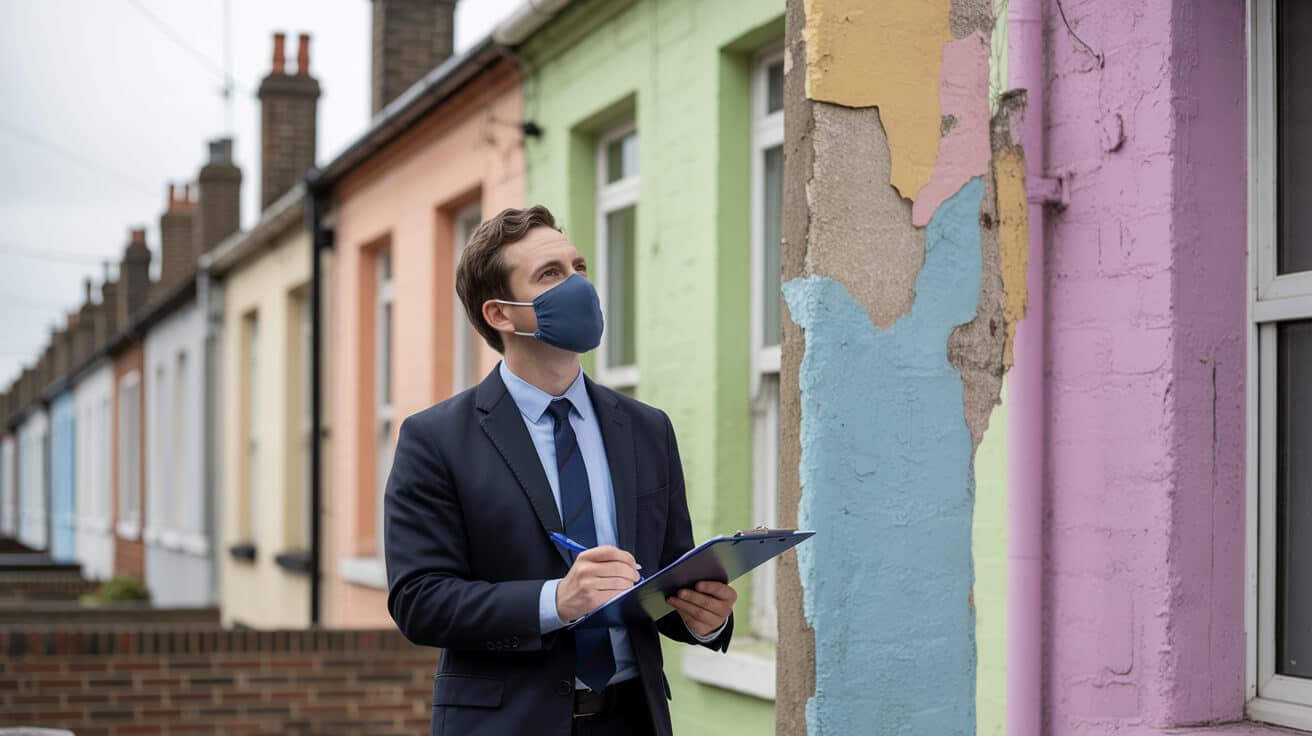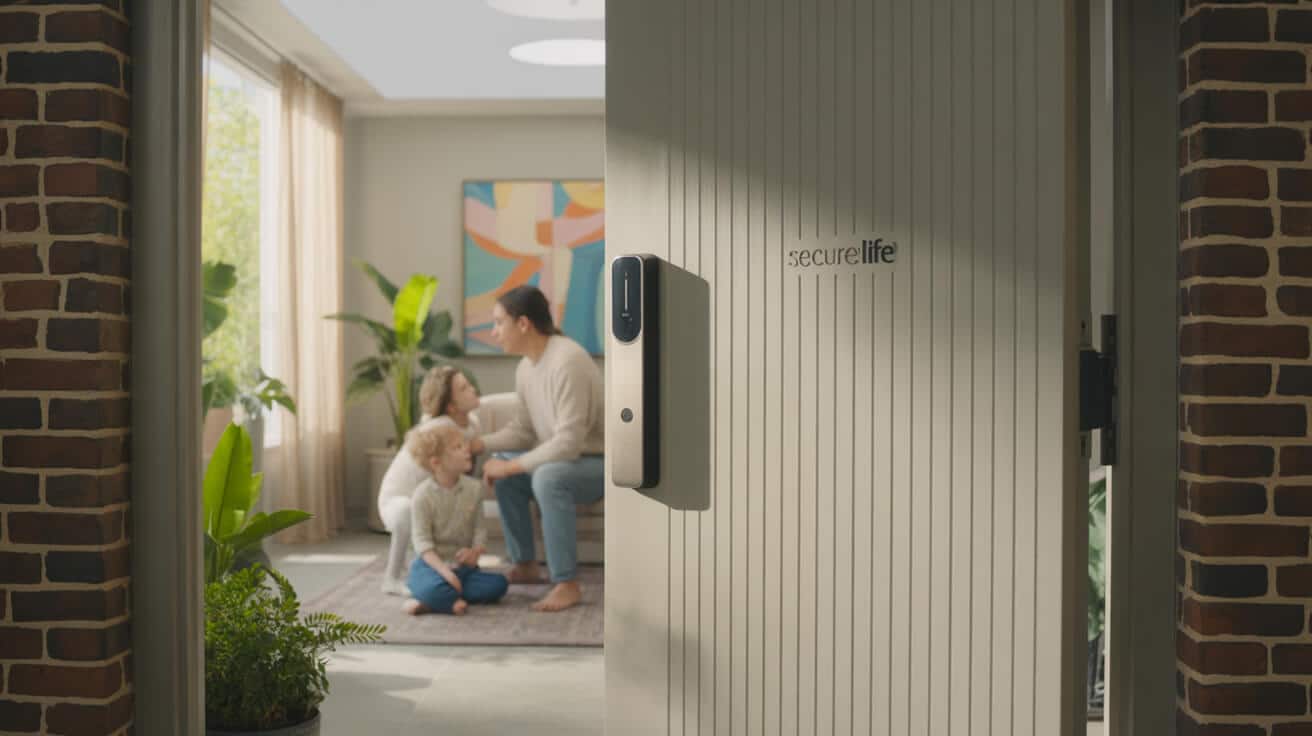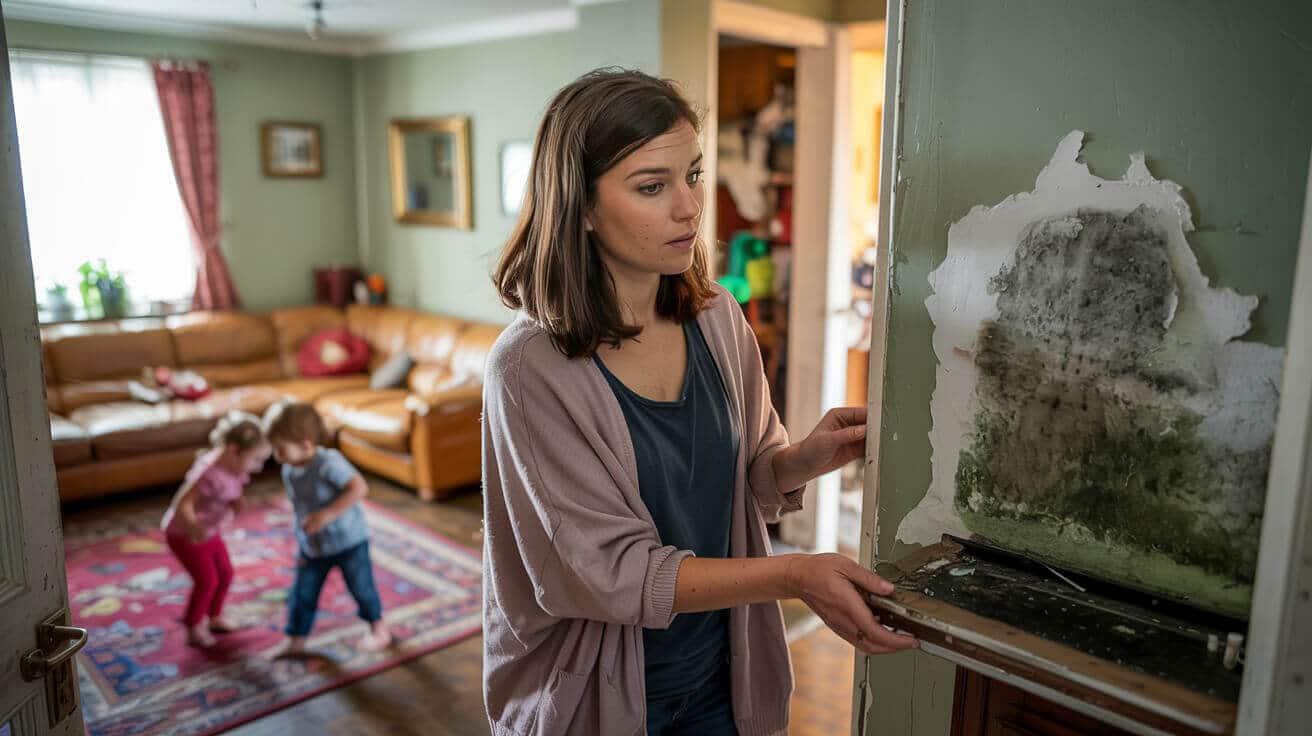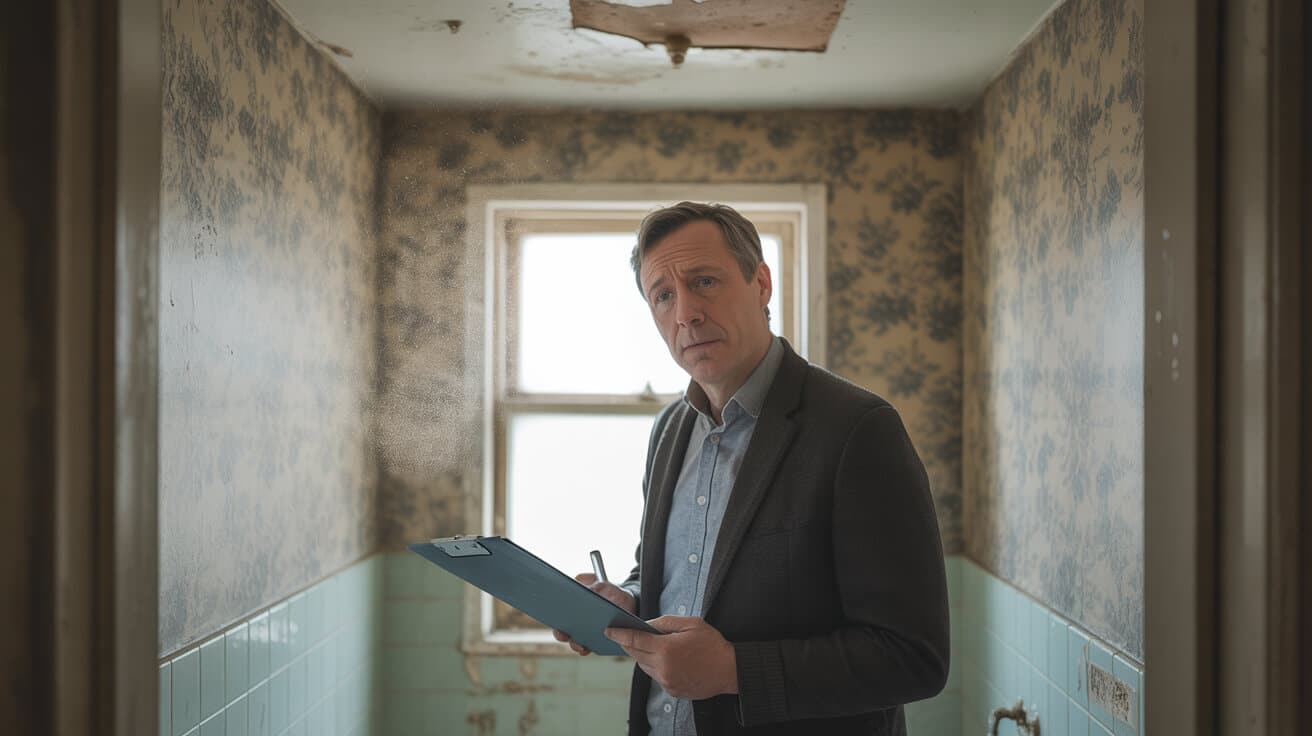 Fire Risk Assessments For Hmos In London A Step By Step Guide
Fire Risk Assessments For Hmos In London A Step By Step Guide

Why is Fire Safety for HMOs in London Demanding More From Landlords Than Ever?
If you own or manage a House in Multiple Occupation (HMO) in London, fire safety compliance isn’t an “extra layer”—it is at the heart of your legal and financial survival. One missed update, one outdated record, or a generic risk assessment can put your entire investment at risk. The law is not static, and councils in London are moving faster than ever to demand proactive, accountable fire safety—not just a folder of old paperwork.
One overlooked risk or expired certificate can close doors and expose you to massive penalties overnight.
It’s now a legal expectation, not a best-practice recommendation: every HMO must have a precise, written, property-specific fire risk assessment, updated annually or after any substantial change. The Regulatory Reform (Fire Safety) Order 2005 and the Housing Act 2004 outline these duties with teeth, and London’s boroughs are enforcing additional checks—some require digital records on demand. Landlords who lean on “good enough” or outdated templates are exposing themselves to expulsion from the market.
The new demands for HMO fire safety:
- Annual, property-specific fire risk assessments: Must be documented, reviewed, and updated after any significant change in layout or tenancy.
- National and borough standards: Many London boroughs have added mandatory safety rules beyond national law—fail to meet these, and you risk fines, enforcement, or even prosecution.
- Digital-first documentation: Landlords may be asked to demonstrate compliance digitally—inspections increasingly demand timestamped evidence and instantly viewable records.
Protecting your business is about anticipating change, not scrambling after a letter from the council. In London, fire safety obligations for HMOs are designed to be lived, not just documented.
What’s Required in a Legitimate HMO Fire Risk Assessment—And How Do You Prove It?

A compliant fire risk assessment (FRA) is more than a checklist—it is a live document, anchored by visible, timestamped actions. When local authorities or insurers audit you, they expect your proof to stand up to real scrutiny. Being able to display a PAS 79 or BS 9997-structured report for every HMO is now a baseline expectation.
- Property-specific, signed and dated reports: Every FRA must detail layout, hazards, and control measures unique to the property—not recycled boilerplate.
- Room-by-room risk logs: Inspectors expect precise coverage: kitchens, electronics, escape routes, bedrooms—each with documented fire prevention and mitigation measures.
- Ongoing communication records: Any drills, tenant briefings, or safety notices should be logged and traceable for each resident.
- Cloud-based or digital storage: Paper records are fast becoming obsolete. Secure digital files make it harder for details to get lost or forgotten, and allow near-instant sharing if an inquiry lands.
Compliance doesn’t end with a signature; it lives and breathes with every update, repair, or tenancy change.
To prove fire risk diligence:
- Keep digital “before and after” photos whenever you address a risk.
- Record all tenant communications: fire briefings, updates, drills.
- Log every alarm test, fire door check, or lighting inspection—back up with photos, receipts, or certificates from professionals.
Being able to produce a real-time, evidence-backed fire safety trail is what separates landlords who sleep soundly from those one letter away from trouble.
What Hazards Put Your HMO at Risk—And What Are Councils Actually Looking For?

Fire authority inspectors in London are not there to pass you on paper—they want proof that you manage risks in the reality your tenants live. Fail on the facts, and no amount of “policy” will save you in a real incident or audit.
Most common issues flagged in HMO inspections:
- Fire doors that don’t close, are propped open, or lack certification.:
- Clutter or blocked escape routes: Bikes, bins, personal items in hallways are a leading cause of failed inspections.
- Outdated or missing alarms: Properties without interlinked, mains-powered alarms in every high-risk area are non-compliant.
- Locked or obscured exits: Emergency routes cannot be locked for “convenience”—inspectors expect them to be always usable.
- Electrical risks: Overloaded sockets, excessive extension leads, or visible wiring failures are fast-tracked for enforcement.
- Combustibles in the wrong places: Flammables in circulation spaces or near heat sources are nearly always called out.
Converted properties—especially those with basement rooms, loft spaces, or open-plan kitchens—tend to attract extra attention. For these, the expectation is even higher: documented mitigations, not excuses.
If you can’t show the photo or certificate, inspectors assume the risk is unmanaged—and a fine is all but certain.
Proactive routine to stay ahead:
- Carry out and document weekly walk-arounds to clear common areas and check fire doors.
- Date-stamp every significant repair or remedial action; keep photos and receipts.
- Record and file every professional service—don’t just say you called an expert, prove it.
Meeting these standards makes a surprise council visit just another routine, not a cause for panic.
Who’s “At Risk” in Your HMO—And How Should This Change Your Approach?

Laws are written around protecting everyone affected by fire—including those you don’t see every day. “Relevant persons” now extends far past just the named tenants; contractors, visiting carers, delivery drivers who frequent the premises, and of course, anyone with added vulnerabilities are all included in fire safety planning.
Categories to cover with your FRA:
- Current tenants and all regular overnight occupants.
- Visitors who might not know the layout or procedures—think cleaners, maintenance, or guests.
- Individuals needing extra help: older adults, children, anyone with physical, sensory, or cognitive impairments.
If your property includes tenants with mobility or understanding difficulties, you’re legally expected to produce and update a Personal Emergency Evacuation Plan (PEEP)—not just have a generic “fire notice” on the wall.
Auditors look for plans that anticipate every shift, every person, and every possible obstacle—not just the average case.
Actions for true “people-first” compliance:
- Track and log every change in occupancy, not just officially signed leases.
- Adjust alarms, escape plans, and displays whenever risks or layouts change.
- Record how and when fire safety information is delivered to all relevant persons; simple verbal explanations aren’t enough.
A landlord considered “respectable” by councils is one who genuinely protects every occupant, not just the idea of them.
Are Your Fire Safety Installations and Logs Audit-Proof—and How Do You Fix Weak Spots Fast?

London’s expectation for HMO safety is not simply “have alarms and doors”—it is to prove that these systems are maintained, fully operational, and backed by a live logbook of actions. If a fire door sticks or an alarm battery dies, you’re responsible—both for fixing the issue and for showing exactly when and how you did it.
Elements of a bulletproof fire safety system:
- Alarms: Mains-powered, interlinked systems in all risk zones. Test and record at least monthly; date and sign each log.
- Fire doors: FD30-rated with self-closing mechanisms, regularly tested and maintained. All professional repairs should be certified and records retained.
- Blocked route prevention: Build a culture and routine of keeping all escape routes clear. Document actions against obstructions, and take photos before and after clearing.
- Maintenance evidence: Every alarm, emergency light, and fire door should have a record of inspections, tests, and any issues resolved—ideally stored digitally and accessible in one place.
The only effective fire record is a visible one—inspectors are not interested in what you meant to do, but what you’ve proven.
Steps for an audit-ready installation and log strategy:
- Migrate all logs to a secure digital platform (cloud-based preferred).
- Set automated reminders for monthly, quarterly, and annual inspections/tests.
- Scan and store all certificates, invoices, and professional sign-offs.
- After every repair or audit, take time-stamped photos as a “proof snapshot”—create an easy-access file for authorities and insurers.
When records are a natural part of your workflow, council audits and insurer reviews become seamless and low-stress.
How Can You Build Habits of Compliance—and Avoid the Risks of Last-Minute Fire Safety?

The difference between landlords who thrive in London and those who are one inspection from disaster comes down to daily compliance habits. Fire risk can’t be pushed to year-end or buried in a spreadsheet. The landlords who are always “audit ready” don’t think of compliance as an annual rush—they handle fire safety as part of routine property management.
Habit beats hope—regulators respect landlords who show steady diligence, not frantic catch-up.
Practical compliance routines for London HMOs:
- Immediate logging: Enter every inspection, repair, or resident briefing the moment it happens.
- Quarterly self-audits: Don’t wait for the legal deadline or after a complaint—review your logbook and site every three months.
- Issue tracking: Log even minor issues—a single complaint handled quickly is better evidence than weeks of silence.
- Digital documentation: Use cloud solutions, not folders in your van; this speeds response, builds trust, and ensures backup if a laptop fails.
A habit of real-time updating is what future-proofs your business—making audits no more threatening than a regular appointment.
How Do You Create a Fire Safety Culture That Wins Tenant Trust and Council Praise?

Every property management guide pays lip service to “safety culture.” The landlords who stand out are those who turn it into operational reality. For HMOs, creating trust with your tenants and credibility with inspectors hinges on practising—not just preaching—safety.
- Welcome packs: Every new tenant receives tailored fire instructions and a simple map of routes and alarms, digital as well as printed.
- Briefings and signatures: All safety talks, drills, and updates come with signed acknowledgements—no corners cut.
- Clear signage: Prominent displays (in multiple languages if needed) reinforce alarms, routes, and what to do first in an emergency.
- Routine drills: For multi-storey or high-turnover HMOs, record every fire drill’s attendance and lessons learned.
Landlords who build safety habits don’t just pass audits—they attract better tenants, gain market reputation, and earn council respect.
Actions to embed genuine culture:
- Tie compliance into every tenant move-in, briefing, and repair.
- Keep transparent, accessible logs of safety communications.
- Use visual reminders and recurring refreshers—even when not explicitly required by law.
- Open lines for tenants to report safety concerns, and record all such reports and your responses.
A true safety culture makes compliance contagious—tenants look out for risks, keep routes clear, and take rules seriously. The reward is an HMO that’s sought after and safer for everyone.
Why Do Leading Landlords Choose All Services 4U for Fire Risk Assessments in London?

In London’s unforgiving regulatory climate, trusting your property’s safety to “good enough” is a gamble you can’t afford. All Services 4U exists to remove that risk. As specialist fire risk assessors for London HMOs, our team bridges technical, legal, and operational support to insulate landlords from fines, refusals, and the unknowns of tomorrow’s compliance landscape.
What sets All Services 4U apart:
- Experienced professionals—every assessor is certified, seasoned, and up to date with the latest borough mandates.
- Tailored, forensic-level FRAs: Not just a generic tick-list but property-specific, signed assessments with digital and print-ready versions.
- Digital logbook systems: Never scramble for paperwork before an audit; access all records, photos, and certificates instantly from anywhere.
- Ongoing support: Reminders for every safety deadline, instant expert backup during audits, and annual maintenance upgrades.
- Proactive legal compliance: We flag every standards shift and keep your property miles ahead of regulatory change.
Real peace of mind is delivered through evidence—our trail of logs, photos, and certificates stands up to the toughest scrutiny.
Choosing All Services 4U transforms fire risk compliance from a cost to confidence. Our process is built to anticipate, adapt, and future-proof—so you can focus on growing your property portfolio with trust.
Ready to Secure Your HMO’s Future? Book Your Fire Risk Assessment with All Services 4U
Fire risk isn’t theoretical—it’s the threat that can end tenancies, empty your property, or block your next deal. Don’t let uncertainty or outdated practices put everything you’ve built in jeopardy. All Services 4U equips you with specialist fire risk assessments, digital reporting tools, and the full support network to keep your HMO compliant, trusted, and ahead of whatever London’s councils decide next.
Secure your future instead of defending your past:
- Schedule an expert HMO fire risk assessment—don’t risk delay.
- Get all your records and documentation digital-ready for your next inspection.
- Access structured support for ongoing compliance, logbook management, and tenant fire safety engagement.
- Present yourself as a landlord who is market-ready, safety-first, and compliance-proof—your tenants and stakeholders will notice.
It takes conviction to rise above the checklist crowd. Make that decision today and let All Services 4U demonstrate what confidence looks like in practice.
Frequently Asked Questions
Why is a written HMO fire risk assessment non-negotiable—even if your tenants are “sensible” and your property is low-risk?
A written fire risk assessment is crucial because fire hazards develop in any HMO over time, no matter how careful your tenants or how routine your property feels day-to-day. London law is clear: if you manage or control an HMO, you’re responsible for uncovering and documenting every hidden hazard—not just signing off once and forgetting. Fires in well-kept homes often stem from unexpected sources—overloaded sockets, unstable escape routes, furniture blocking exits, or fire doors left unserviced. The Regulatory Reform (Fire Safety) Order 2005 establishes this assessment as your frontline defence: no written record means you lack proof you even considered residents’ safety, exposing you to enforcement or litigation. In a compliance dispute, your actual routine matters far less than what’s credibly documented.
What sets a proper fire risk assessment apart from a “tick-box” job?
- Personalisation: References each room’s layout, unique escape route, and any tenant vulnerability, not just generic hazards.
- Change logs: Every repair, tenant adjustment, or system upgrade is included and time-stamped for traceability.
- Proof of action: Preventive measures, before-and-after photos, service records—all connect actions to outcomes.
A fire risk assessment isn’t just a formality; it’s the first thing that proves you cared.
Why is this critical for owner-managers and portfolio landlords?
Regulatory focus is shifting from generic templates to live, evolving proof—whether you manage one house or multiple. Paper records or “I do it all myself” approaches rarely stand up to today’s audit standards in London.
Modern digital tools make this easier: automatic reminders, instant photo uploads, and secure cloud logs let you update risks in minutes, not hours, and offer evidence if an incident is ever alleged.
Which documentation gaps trigger the harshest enforcement in London HMO fire safety checks?
Most enforcement actions spiralling from HMO inspections come down to one thing: documentation lapses that erase months or years of responsible management. Councils aren’t impressed by what you “meant” to do—they want evidence you actually did it, on time and with continuity. Simply put, a missing document is as bad as missing safety gear in the eyes of enforcement officers and insurers.
What are the most common pitfalls?
- Out-of-date FRAs or lost certificates—proving nothing when it matters.
- Paper folders only, sometimes kept off-site or quickly thrown together for show.
- No log of repeat tasks: fire alarm tests, door checks, or tenant instructions.
- Assumptions that photos “somewhere on your phone” are valid proof.
- Skipping tenant education logs—if you haven’t formally walked them through safety, there’s a liability window.
Every gap in your paperwork becomes the council’s opportunity to escalate.
How do top landlords engineer inspection-proof record systems?
- Cloud-based folders with visible timelines for every property.
- Digital checklists for daily/weekly tasks, timestamped and signed when completed.
- Certificates scanned, backed up, and cross-referenced with the corresponding equipment.
- Routine PDF/photo documentation of high-risk items: alarm panels, fire doors, blocked routes.
- Redundant storage—at least one off-site or cloud location, so nothing is lost in a hardware crash.
Why is investing in digital compliance tools now a clear advantage?
Digital compliance platforms streamline every repair, test, and briefing into an audit-ready, chronological log. This is what council inspectors—and your future self—prefer when time or evidence is short.
How do inspectors actually verify that physical fire safety controls in your HMO will perform under stress?
Inspectors treat every recorded claim as a hypothesis to be field-tested. They’re not just auditing paperwork—they’re simulating the first minutes of an emergency. Paper logs and digital files only matter if what’s on the ground matches the storey. If an alarm, escape route, or fire door fails in real life, your records don’t matter. This approach is rooted in hard data: post-fire audits in HMOs often reveal that claimed measures failed in practice due to under-testing, DIY repairs, or simple neglect.
What does a real inspection walkthrough look like?
- Each alarm—smoke and heat—is triggered to ensure a full-audible, linked, and fast response throughout all levels of the property.
- Every fire door gets tested for smooth close, correct seal, proper signage, and zero blockages or wedges.
- Stairwells and escape routes must be traversed end-to-end, with agents flagging anything—a bike, a bin, even a doormat—that blocks egress.
- Mains lighting cut-outs check that emergency lights work immediately, both bright and long enough to pass statutory standards.
- Wall and ceiling penetrations (cable holes, pipes) are inspected for “cold smoke” leakage, poor foam plug jobs, or missing intumescent collars.
What hidden failures are most often caught—despite solid records?
- Old batteries in alarm sounders or “system OK” lights masking dead detectors
- Tenants “borrowing” fire door wedges or installing personal locks without permission
- Unconscious DIY fixes (plaster filler, wrong sealant) that undermine rated doors and walls
If you don’t try to fail your own property before an inspector does, you’re setting yourself up for a surprise.
How can professional support prevent costly oversights?
Scheduling mock audits, especially with multi-trade professionals like those at All Services 4U, reveals invisible fault lines: from the state of seals and alarms to subtle but high-risk tenant modifications. Experience has shown that a fresh set of eyes will catch 90% of real-world risks that managers miss due to routine familiarity.
When do you need to update an HMO fire risk assessment outside the annual review, and why do most landlords miss it?
Annual reviews are just the baseline—any change that materially affects fire safety should bring an instant update. Landlords most often stumble by treating the assessment as “one and done,” only to be blindsided by a new risk that was left unlogged or unplanned.
Which real-world events demand immediate FRA updates?
- New tenants with mobility needs or medical devices
- Structural changes: new bedrooms, alterations to kitchens or lofts
- Replacement of doors, windows, alarm panels, or lighting systems
- An actual fire, false alarm, or formal complaint
- Council, engineer, or insurance reports with recommendations
If any of these happen, your assessment and log should update that week—not at year’s end.
How can technology support this?
Property management apps, digital FRA tools, and even calendar integration with Google or Outlook can nudge you to log every trigger event, attach the latest certificate, and keep risk status live. This lowers your future admin burden while signalling to inspectors that your approach stays current.
What risks are mitigated by this habit?
- Reducing insurance claim rejections due to out-of-date or static assessments.
- Avoiding sudden council enforcements for perceived negligence, especially after a tenant-logged hazard.
- Building brand and peer reputation for responsible, forward-looking management in the sector.
What operational routines guarantee passing HMO fire safety inspections—even in high-turnover or multi-house portfolios?
Success in audit scenarios isn’t about last-minute hustle—it’s the rhythm you build day to day. The proof is always in the pattern: who can show they run their houses “audit-ready” all year, not just for show. The trend among London’s strongest operators is relentless process automation and open-book audits.
What are the winning routines?
- Automated weekly/monthly reminders embedded in team workflows for alarm/door checks, log updates, and photo capture.
- Shared digital checklists for high-frequency tasks (e.g., every Monday alarm test, Friday escape-route walkthrough).
- Routine onboarding and exit briefings for tenants, with sign-in logs for each person.
- Scheduled professional review—at least annually, but ideally before peak tenant move-in/move-outs.
- Quarterly updates sourced directly from council or fire brigade channels, mapped into your compliance cycle.
- Tenant engagement: reports of obstructions or hazards channelled instantly into a central log, not just handled ad hoc.
How do digital-first processes set you apart?
Structured platforms ensure every action—from equipment tests to compliance fixes—is catalogued and time-stamped. This takes pressure off staff and builds a “living ledger” that impresses not just auditors but future insurance partners and partners.
What can All Services 4U deliver here?
By combining routine maintenance, digital compliance logging, and tenant education, All Services 4U offers continuous support—removing the stress of short-notice council spot checks and turning compliance from a box-tick into a badge of professional pride.
What’s the fastest way to bounce back from a failed HMO fire assessment, and how do you stop it haunting your reputation?
Rapid, transparent remediation is the single best signal you can send after a fire safety failure—especially if you’re upfront with both councils and tenants. The blast zone of a compliance breach isn’t just regulatory: word travels among colleagues, on landlord forums, and with managing agents who watch for patterns. What matters most is moving from problem to evidence-based solution with speed and openness.
Stepwise action plan after a failed assessment:
- Secure immediate repairs by certified, cross-trade teams—not patch jobs or DIY shortcuts.
- Update your FRA after every fix, citing technician name, certificate, and service date.
- Notify tenants with a written and, if possible, group briefing on new systems, exits, or instructions.
- Request council reinspection proactively—showing readiness, not reluctance, to be rechecked.
- Commission a third-party (accredited) audit—external validation accelerates both council and insurance acceptance.
- Log all evidence digitally, not just in emails or on a phone; central records eliminate doubts.
Every hour you spend logging honest repairs buys you months of reputation—councils forgive the first error, but never the repeat.
How does All Services 4U accelerate recovery and restore council faith?
Immediate dispatch of specialist teams, on-record digital evidence collection, and follow-up audit support reset your compliance narrative. With platform integration and qualified remedial support, your next inspection becomes an opportunity to demonstrate professional transformation, keeping units operational and stakeholders confident.
Professional fire safety management isn’t about passing by chance—it’s a mark of leadership. Make routine your greatest advantage—book your HMO compliance review or digital audit setup with All Services 4U and run every property with confidence, not anxiety.



